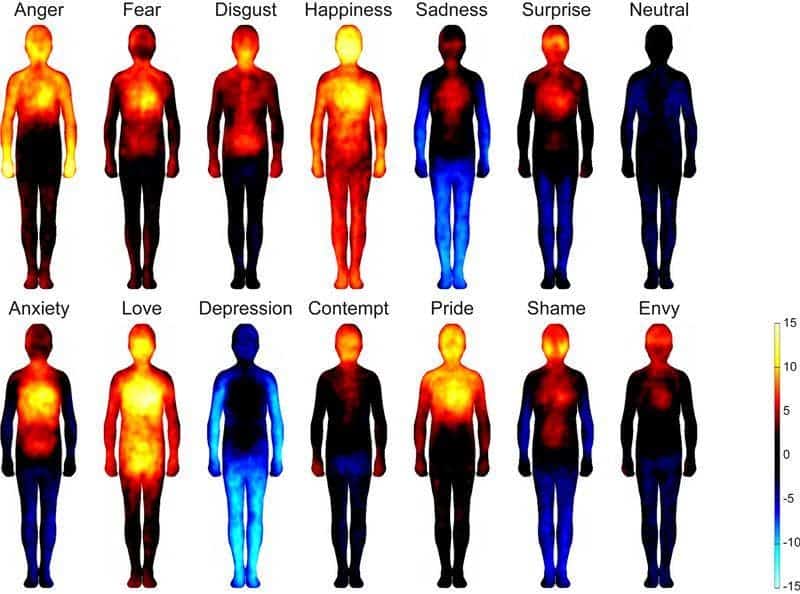Researchers from the Aalto University in Finland have revealed how the most common emotions are experienced in the body.

Emotions are a very good way of preparing us for environmental challenges. It has been known for quite some time that our emotions trigger physical reactions in our body, and the bodily maps of these sensations were topographically different for different emotions. For example, anxiety may be associated with chest pain, while being excited or in love can develop a general feeling of being warm.
“Emotions adjust not only our mental, but also our bodily states. This way the prepare us to react swiftly to the dangers, but also to the opportunities such as pleasurable social interactions present in the environment. Awareness of the corresponding bodily changes may subsequently trigger the conscious emotional sensations, such as the feeling of happiness,” tells assistant professor Lauri Nummenmaa from Aalto University.
The research was carried online, and it relied on subjects responding to certain stimuli. Over 700 individuals from Finland, Sweden and Taiwan took part in the study, with the researchers inducing certain emotional states to the subjects. They were then asked to colour human body images with red where they felt increased activity and with blue where they felt reduced activity.
“The findings have major implications for our understanding of the functions of emotions and their bodily basis. On the other hand, the results help us to understand different emotional disorders and provide novel tools for their diagnosis.”
The emotional patterns were consistent throughout the different cultures, which goes to show that emotions are experienced in pretty much the same way by all people, regardless of age, sex, and culture – the bodily sensations are biological functions.
Journal Reference:
- L. Nummenmaa, E. Glerean, R. Hari, J. K. Hietanen. Bodily maps of emotions. Proceedings of the National Academy of Sciences, 2013; DOI: 10.1073/pnas.1321664111






